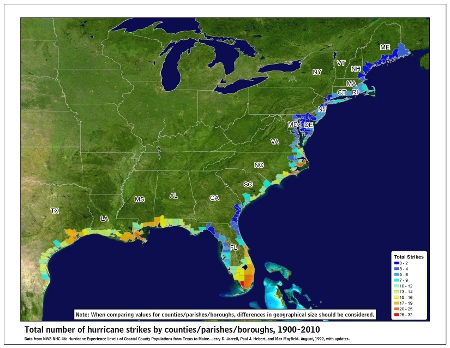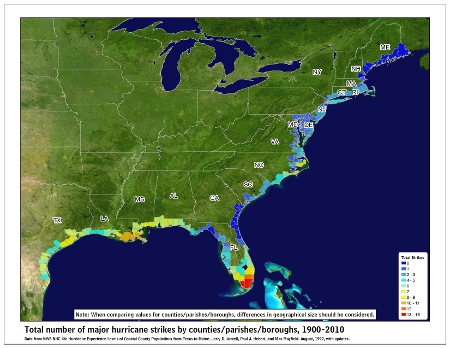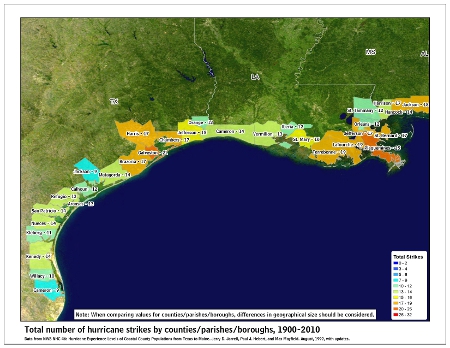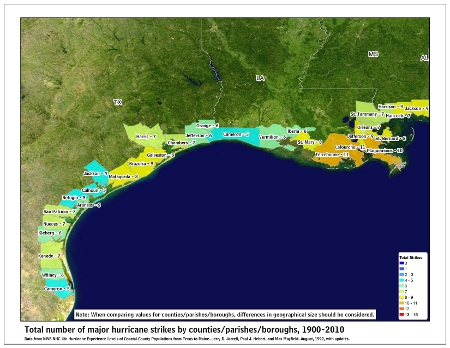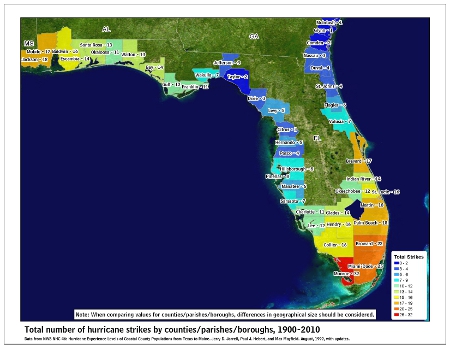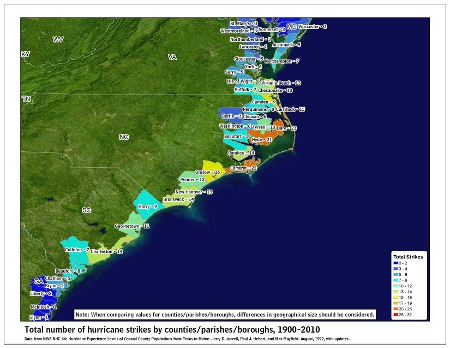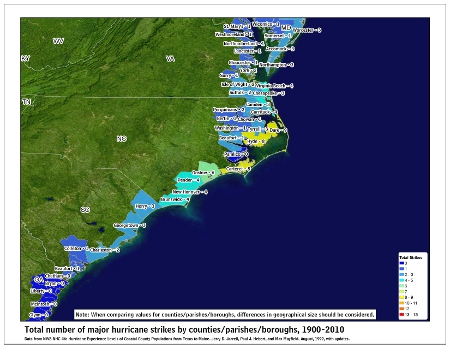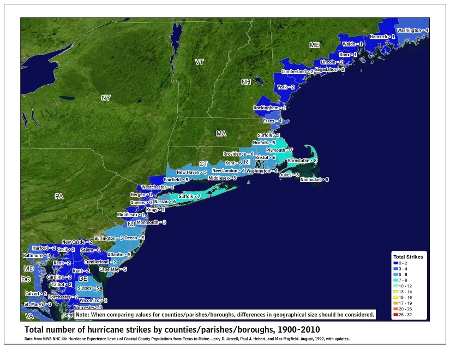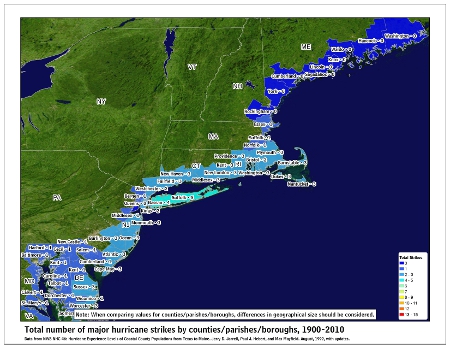Page Navigation: Atlantic Tropical Outlook / Tropical Discussion / Active Tropical Systems
Scheduled Recon Flight Plans / Marine Weather Discussion / Tropical Monthly Summary
2 Day Graphical Tropical Weather Outlook

7 Day Graphical Tropical Weather Outlook

Atlantic Tropical Weather Outlook
- Sat, 30 Nov 2024 23:31:37 +0000: Atlantic Tropical Weather Outlook - Atlantic Tropical Weather Outlook
000
ABNT20 KNHC 302331
TWOAT
Tropical Weather Outlook
NWS National Hurricane Center Miami FL
700 PM EST Sat Nov 30 2024
For the North Atlantic...Caribbean Sea and the Gulf of Mexico:
Tropical cyclone formation is not expected during the next 7 days.
This is the last regularly scheduled Tropical Weather Outlook of
the 2024 Atlantic Hurricane Season. Routine issuance of the
Tropical Weather Outlook will resume on May 15, 2025. During the
off-season, Special Tropical Weather Outlooks will be issued as
conditions warrant.
$$
Forecaster Beven
Tropical Weather Discussion
- Thu, 12 Dec 2024 10:46:22 +0000: NHC Atlantic Tropical Weather Discussion - NHC Tropical Weather Discussion (Atlantic)
000
AXNT20 KNHC 121046
TWDAT
Tropical Weather Discussion
NWS National Hurricane Center Miami FL
1215 UTC Thu Dec 12 2024
Tropical Weather Discussion for North America, Central America
Gulf of Mexico, Caribbean Sea, northern sections of South
America, and Atlantic Ocean to the African coast from the
Equator to 31N. The following information is based on satellite
imagery, weather observations, radar and meteorological analysis.
Based on 0600 UTC surface analysis and satellite imagery through
1040 UTC.
...MONSOON TROUGH/ITCZ...
The monsoon trough enters the Atlantic over W Africa near 11N15W
then extends southwestward to 08N17W. The ITCZ continues from
08N17W to 04N35W to 02N50W. Scattered moderate convection is noted
within 200 nm on either side of the ITCZ between 20W and 54W.
...GULF OF MEXICO...
Fresh to strong northerly winds and rough seas in the 8-16 ft are
ongoing over the E and SW Gulf after the passage of a cold front
that exited the basin Wed evening. Gentle to moderate NE to E
winds are elsewhere along with slight to moderate seas.
For the forecast, fresh to strong northerly winds and rough seas
greater than 12 ft over the E and SW Gulf will continue to
diminish through this afternoon. However, strong high pressure
building over the SE CONUS and its associated ridge will continue
to support fresh to strong NE winds and rough seas to 11 ft over
the SE Gulf and the Straits of Florida through Sun night.
Afterward, moderate to fresh E to SE winds across the basin will
further diminish to gentle to moderate speeds by Tue.
...CARIBBEAN SEA...
The tail of a cold front over the SW N Atlantic waters has stalled
over the NW Caribbean where it continues to generate scattered
showers in the Belize and Honduras offshore waters. The stationary
front that extends from central Cuba to the Gulf of Honduras is
followed by fresh to strong NE winds and rough seas to 10 ft,
highest in the Yucatan Channel. Over the central basin, NE fresh
to strong winds prevail along with moderate seas, except rough to
9 ft offshore Colombia. Moderate to fresh NE winds and moderate
seas are ongoing elsewhere.
For the forecast, strong high pressure building over the Gulf of
Mexico and in the wake of a cold front over the SW N Atlantic
waters will continue to support fresh to strong NE winds and
moderate to rough seas in the NW Caribbean and the Windward
Passage through Sun morning. Afterward, moderate to fresh NE winds
will further diminish to gentle to moderate speeds by Mon
afternoon as the broad high pressure shift NE and then eastward to
the north-central Atlantic waters. The high pressure will also
support fresh to strong NE winds over the central and SW Caribbean
through Sat morning. Moderate to fresh NE winds over the E
Caribbean will diminish on Fri as a surface trough enters the
region. Otherwise, the front will dissipate tonight.
...ATLANTIC OCEAN...
A cold front extends from 31N74W SW to the northern Bahamas into
central Cuba and stalls in the NW Caribbean. Fresh to strong
northerly winds and rough seas behind the front continue to affect
the Florida offshore waters, and the northern and central
Bahamas. The remainder subtropical waters are under the influence
of a broad ridge that continues to be disected by a surface trough
that extends from 27N48W to 18N54W. The trough is generating
scattered showers and tstms between 42W and 59W. Aside from the
convection, a tighter pressure gradient against the ridge is
supporting fresh NE winds and rough seas to 10 ft west of the
trough axis and fresh to near gale force E to SE winds along with
rough seas to 14 ft east of its axis to 40W. Gentle to moderate
winds and seas are ongling elsewhere in the subtropical waters.
Otherwise, moderate to fresh NE to E winds are across the
tropical waters E of 50W.
For the forecast W of 55W, the cold front will stall from 31N68W
to the central Bahamas this evening and dissipate tonight into
early Fri. Fresh to strong northerly winds and rough seas
affecting the Florida offshore waters, and the northern and
central Bahamas will prevail and expand in areal coverage through
the weekend as strong high pressure building in the wake of the
front will tighten the pressure gradient against an approaching
surface trough from the east. Frequent gust to gale force winds
will likely develop over the northern Bahamas offshore waters Sat
through Sun. Winds will start to gradually weaken across the
region Sun night into Mon.
$$
Ramos
Active Tropical Systems
- Mon, 02 Dec 2024 11:31:37 +0000: The Atlantic hurricane season runs from June 1st through November 30th. - NHC Atlantic
The Atlantic hurricane season runs from June 1st through November 30th.
Scheduled Reconnaissance Flight Plans
- Wed, 11 Dec 2024 18:13:23 +0000: Weather Reconnaissance Flights Plan of the Day - Weather Reconnaissance Flights Plan of the Day
000 NOUS42 KNHC 111815 REPRPD WEATHER RECONNAISSANCE FLIGHTS CARCAH, NATIONAL HURRICANE CENTER, MIAMI, FL. 0115 PM EST WED 11 DECEMBER 2024 SUBJECT: WINTER SEASON PLAN OF THE DAY (WSPOD) VALID 12/1100Z TO 13/1100Z DECEMBER 2024 WSPOD NUMBER.....24-011 I. ATLANTIC REQUIREMENTS 1. NEGATIVE RECONNAISSANCE REQUIREMENTS. 2. OUTLOOK FOR SUCCEEDING DAY.....NEGATIVE. II. PACIFIC REQUIREMENTS 1. FLIGHT ONE - TEAL 77 A. 13/0000Z B. AF306 02WSC IOP01 C. 12/1900Z D. 15 DROPSONDES APPROXIMATELY 60 NM APART WITHIN AN AREA BOUNDED BY: 30.0N 125.0W, 30.0N 160.0W, 45.0N 125.0W, 45.0N 160.0W AND THEN 5 BOXES OF BUOYS DROPPED AT APPROXIMATELY 115 NM INTERVALS BETWEEN 40.5N 150.0W AND 41.0N 140.0W. E. AS HIGH AS POSSIBLE/ 12/2030Z TO 13/0230Z, EXCEPT SFC TO 15,000 FT/ 12/2300Z TO 13/0100Z. 2. A NOAA G-IV AIRCRAFT ATMOSPHERIC-RIVERS MISSION REQUEST HAS BEEN RECEIVED FROM NCEP FOR THE 13/0000Z SYNOPTIC TIME BUT CANNOT BE SUPPORTED. 3. SUCCEEDING DAY OUTLOOK: A USAF WC-130J AIRCRAFT MAY FLY AN ATMOSPHERIC RIVERS MISSION OVER THE EASTERN PACIFIC FOR THE 14/0000Z SYNOPTIC TIME. 4. ADDITIONAL DAY OUTLOOK: A USAF WC-130J AIRCRAFT MAY FLY AN ATMOSPHERIC RIVERS MISSION OVER THE EASTERN PACIFIC FOR THE 15/0000Z SYNOPTIC TIME. $$ KAL/SEF/WJM
Marine Weather Discussion
- Mon, 17 May 2021 15:22:40 +0000: NHC Marine Weather Discussion - NHC Marine Weather Discussion
000
AGXX40 KNHC 171522
MIMATS
Marine Weather Discussion
NWS National Hurricane Center Miami FL
1122 AM EDT Mon May 17 2021
Marine Weather Discussion for the Gulf of Mexico, Caribbean Sea,
and Tropical North Atlantic from 07N to 19N between 55W and 64W
and the Southwest North Atlantic including the Bahamas
This is the last Marine Weather Discussion issued by the National
Hurricane Center. For marine information, please see the Tropical
Weather Discussion at: hurricanes.gov.
...GULF OF MEXICO...
High pressure along the middle Atlantic coasts extending SW to
the NE Gulf will remain generally stationary throughout the
week. This will support moderate to fresh E to SE winds over the
basin through Tue. Winds will increase to fresh to strong late
Tue through Fri as low pressure deepens across the Southern
Plains.
...CARIBBEAN SEA AND TROPICAL N ATLANTIC FROM 07N TO 19N BETWEEN
55W AND 64W...
A ridge NE of the Caribbean Sea will shift eastward and weaken,
diminishing winds and seas modestly through Wed. Trade winds
will increase basin wide Wed night through Fri night as high
pressure builds across the western Atlantic.
...SW N ATLANTIC INCLUDING THE BAHAMAS...
A weakening frontal boundary from 25N65W to the central Bahamas
will drift SE and dissipate through late Tue. Its remnants will
drift N along 23N-24N. The pressure gradient between high
pressure off of Hatteras and the frontal boundary will support
an area of fresh to strong easterly winds N of 23N and W of 68W
with seas to 11 ft E of the Bahamas late Tue through Fri.
$$
.WARNINGS...Any changes impacting coastal NWS offices will be
coordinated through AWIPS II Collaboration Chat, or by
telephone:
.GULF OF MEXICO...
None.
.CARIBBEAN SEA AND TROPICAL N ATLANTIC FROM 07N TO 19N BETWEEN
55W AND 64W...
None.
.SW N ATLANTIC INCLUDING THE BAHAMAS...
None.
$$
*For detailed zone descriptions, please visit:
http://www.nhc.noaa.gov/abouttafbprod.shtml#OWF
Note: gridded marine forecasts are available in the National
Digital Forecast Database (NDFD) at:
http://www.nhc.noaa.gov/marine/grids.php
For additional information, please visit:
http://www.nhc.noaa.gov/marine
$$
.Forecaster GR. National Hurricane Center.
Atlantic Tropical Monthly Summary
- Sun, 01 Dec 2024 03:00:40 +0000: Atlantic - Atlantic
000
ABNT30 KNHC 010300
TWSAT
Monthly Tropical Weather Summary
NWS National Hurricane Center Miami FL
1000 PM EST Sat Nov 30 2024
For the North Atlantic...Caribbean Sea and the Gulf of Mexico:
Tropical cyclone activity this November was above average in terms
of the number of named storms, hurricanes, and major hurricanes in
the Atlantic basin. Three named storms formed during the month,
including one (Rafael) that became a major hurricane. Based on a
30-year climatology (1991-2020), a tropical storm forms in November
once every year or two, and a hurricane forms once every two years.
Rafael strengthened into a hurricane while passing near Jamaica and
the Cayman Islands before making landfall in western Cuba as a
category 3 hurricane. Elsewhere, Patty brought tropical storm
conditions to portions of the Azores. Sara meandered near the coast
of Honduras before making landfall as a tropical storm in Belize.
Overall, the 2024 Atlantic hurricane season had above-normal
activity in terms of the number of named storms, hurricanes, and
major hurricanes. In 2024, there were 18 named storms that formed in
the Atlantic basin, of which 11 became hurricanes and 5 strengthened
into major hurricanes (category 3 or higher on the Saffir-Simpson
Hurricane Wind Scale). These numbers are greater than the long-term
(1991-2020) averages of 14 named storms, 7 hurricanes, and 3 major
hurricanes. In terms of Accumulated Cyclone Energy (ACE), which
measures the strength and duration of tropical storms and
hurricanes, activity in the basin in 2024 was about 34 percent above
the long-term (1991-2020) average.
Reports on individual cyclones, when completed, are available at the
National Hurricane Center website at
www.hurricanes.gov/data/tcr/index.php?season=2024&basin=atl
Summary Table
Name Dates Max Wind (mph)
------------------------------------------------------------------
TS Alberto 19-20 Jun 50*
MH Beryl 28 Jun-9 Jul 165
TS Chris 30 Jun-1 Jul 45*
H Debby 3-9 Aug 80
H Ernesto 12-20 Aug 100
H Francine 9-12 Sep 100
TS Gordon 11-17 Sep 45
MH Helene 24-27 Sep 140
H Isaac 26-30 Sep 105
TS Joyce 27 Sep-1 Oct 50
MH Kirk 29 Sep-7 Oct 145
H Leslie 2-12 Oct 105
MH Milton 5-10 Oct 180
TS Nadine 19-20 Oct 60
H Oscar 19-22 Oct 85
TS Patty 2-4 Nov 65
MH Rafael 4-10 Nov 120
TS Sara 14-18 Nov 50
------------------------------------------------------------------
Dates are based on Coordinated Universal Time (UTC).
* Denotes a storm for which the post-storm analysis is complete.
$$
Hurricane Specialist Unit
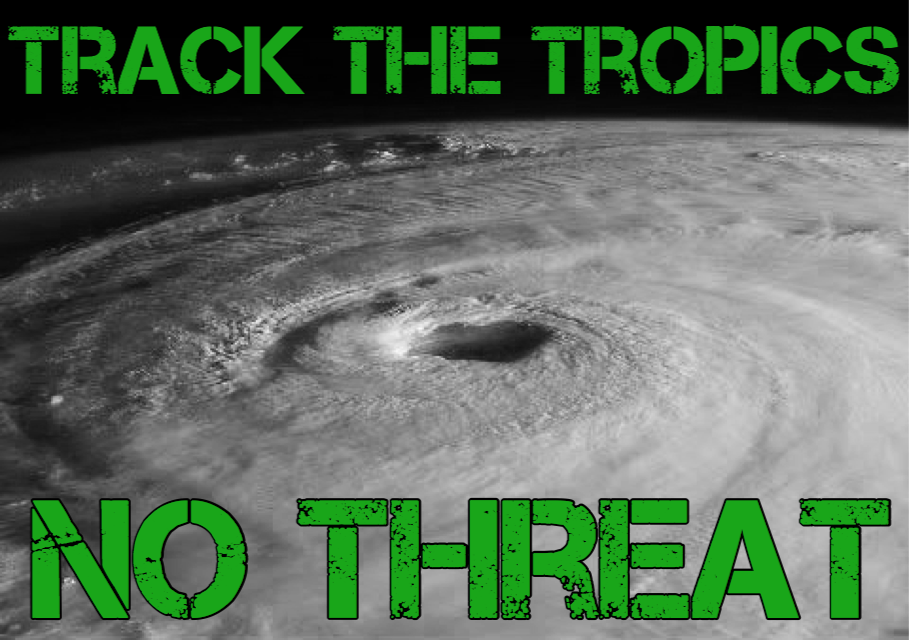
 DONATE
DONATE![[Map of 1950-2017 CONUS Hurricane Strikes]](http://www.nhc.noaa.gov/climo/images/conus_strikes_sm.jpg)
